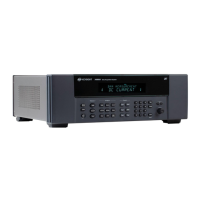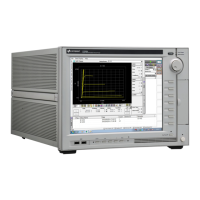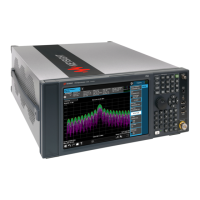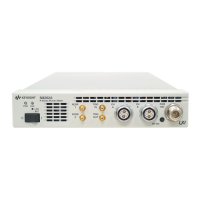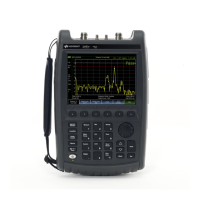5 Programming Examples
242 Keysight Models 6811C, 6812C, and 6813C Programming Guide
Step 2 Program the list of output values for each function. The list commands
take a comma-separated list of arguments. The order in which the
arguments are given determines the sequence in which the values will
be output. For example, to cycle the voltage through a sequence that
includes nominal line, high line, and low line, a list may include the
following values:
LIST:VOLTage 120, 132, 108, 120, 132, 108, 120, 132, 108
You can specify lists for more than one function. For example, to
synchronize the previous voltage list with another list that varies the
output frequency from nominal, to high, to low, the lists may include
the following values:
LIST:VOLTage 120, 132, 108, 120, 132, 108, 120, 132, 108
LIST:FREQuency 60, 60, 60, 63, 63, 63, 57, 57, 57
All lists must have the same number of data values or points, or an
error will occur when the transient system that starts the sequence is
later initiated. The exception is when a list has only one item or point. In
this case the single-item list is treated as if it had the same number of
points as the other lists, with all values being equal to the one item. For
example:
LIST:VOLTage 120, 130, 140, 150;FREQuency 60
is the same as:
LIST:VOLTage 120, 130, 140, 150
LIST:FREQuency 60, 60, 60, 60
Step 3 Determine the time interval that the output remains at each level or
point in the list before it advances to the next point. The time is
specified in seconds. For example, to specify five dwell intervals, use:
LIST:DWELl 1, 1.5, 2, 2.5, 3
The number of dwell points must equal the number of output points. If
a dwell list has only one value, that value will be applied to all points in
the output list.
